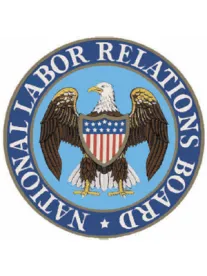Setting the stage for another likely change in Board law, the NLRB has granted review over a Regional Director’s dismissal of an election petition, where the Union sought to represent in the same bargaining unit a contractor’s own employees and temporary employees provided to the contractor by a staffing company. In its May 18, 2015, announcement on this hot-button issue, the Board followed its now-familiar pattern of inviting interested parties to file amicus briefs, this time over the continued applicability of the Board’s 2004 decision in Oakwood Care Center, 343 NLRB 659, on which the Regional Director relied.
In Miller & Anderson, Sheet Metal Workers Local 19 petitioned the NLRB to represent all sheet metal workers employed in in a three-employer, Franklin County, PA, unit, consisting of: 1) employees of Miller & Anderson (M&A), the host employer, 2) employees employed by Tradesmen International, a temporary service providing workers to M&A, and 3) employees jointly employed by M&A and Tradesmen.
Under Board precedent in Oakwood Care Center, a bargaining unit consisting of employees employed solely by a host employer (or, presumably, those employed by a temporary service alone) and those jointly employed by the host employer and the temporary service is appropriate only if all the employers involved consent to such multi-employer bargaining – assuming the union wins the election. M&A and Tradesmen did not consent to the conduct of an election in a multi-employer voting unit, or to multi-employer bargaining in the event the Union prevailed in the election. Thus, in accordance with Oakwood Care Center an NLRB Regional Director dismissed the petition. Local 19, however, sought review by the NLRB. Three years later, the Board has granted the union’s request to examine the “applicability of Oakwood Care Center.”
The competing policies implicated by such cases and which culminated in Oakwood Care Center are familiar, and have been resolved by the Board in dueling decisions in a number of cases. From the Union’s perspective, the current Board rule does not adequately reflect the reality of the modern workplace, in which a significant share of the American workforce is working in “contingent and alternative employment arrangements.” In its view, the rule stands as an unwelcome impediment to union organization. The Union would have the Board return to the rule articulated in M.B. Sturgis, 331 NLRB 1298 (2000), in which the Board held that separating “regular” employees (those employed solely by the host or “user” employer) from the “temporaries” (who may share the same classifications, skills, duties and supervision) creates an “artificial division” between such employees not required or justified by the statute. In Sturgis, the Board found that all employees doing work for the host employer – regular and temporaries – did not constitute a multi-employer unit requiring the employers’ consent.
Subsequently, in Oakwood Care Center, however, the Board majority reversed the position it had taken in M.B. Sturgis, holding that certifying a union as representative of a bargaining unit consisting of both “regular” employees and “temporaries,” absent the consent of the employers, would be “inconsistent with the plain meaning of ‘employer unit’ in the Act.” The Union in M&A would have the current Board adopt the reasoning of the two Board members who dissented in Oakwood Care Center, who defended the Sturgis decision. The dissenters argued all employees are on the site work for the host employer as part of a “common enterprise,” so it would be appropriate for the joint employees to be combined with the employer’s sole employees in a “joint bargaining unit.”
Until the Board decides Miller & Anderson, host or “user” employers of the services of temporary employees should assess their posture with respect to such relationships, and the implications of the Board’s possible return to its M.B. Sturgis standard.






 />i
/>i
